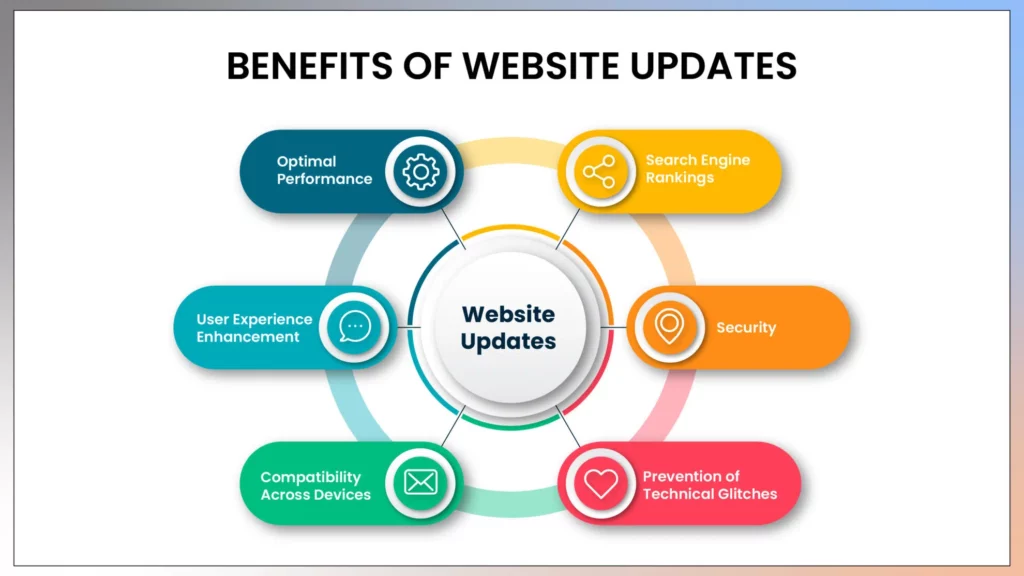Importance of Monthly website maintenance with Tekglide
Your website is the informational center of all online campaigns and is essential to conversions. But let’s face it: not only do technologies change, but so do consumer demands and digital marketing strategies. Consumer preferences and digital marketing are changing, and companies are constantly adjusting to meet these needs.
This is the point at which regular website maintenance becomes crucial. This blog will discuss the need for website maintenance, what it should include, and how to make a checklist for website security. Let’s get started: what exactly is website maintenance?
What is Website Maintenance
Website maintenance is a set of activities and processes that ensures the smooth functioning of your website. It includes website security and relevance of a website, regular updates, checks, and optimizations to keep a website up-to-date. Along with making it secure and aligned with the industry trend. The key involvements of website maintenance:
Content Updates: Updating and refreshing the content on your website is a fundamental form of maintenance. This includes adding new blogs, case studies, product information, or other content. Fresh and engaging content keeps your audience informed and contributes to improved search engine rankings.
Software and Plugin Updates: Websites often rely on various components and plugins to enhance functionality. Regular updates to these elements are crucial for security and performance. Developers release updates to address risks and vulnerabilities. It, in return, improves features and ensures compatibility with new technologies.
Security Audits and Patches: Website updates involve regular security audits to identify risks and vulnerabilities. Any discovered weaknesses go through the application of security patches and updates. This approach protects the sensitive data and prevents unauthorized access.
Performance Optimization: Ensuring that your website performs smoothly for user satisfaction. Website updates include tasks such as sizing up images, reducing code, and improving server configurations for fast page loading time. A quick and responsive website leads to a positive user experience.
Backup and Recovery: Regularly backing data up your website is a safety measure. If you face data loss, server issues, or other circumstances, a data backup helps restore your website. This is an essential part of risk management in website updates.
Mobile Responsiveness: Due to the increasing use of mobile devices, ensuring that your website is device-friendly is necessary. Website maintenance involves testing and optimizing the site and guaranteeing responsiveness across various devices and screen sizes.
Broken Link and Errors: Broken links and errors can have an impact on user experience and your website’s SEO. Regular maintenance checks are necessary to ensure a seamless browsing experience. This includes identifying and fixing broken links, missing pages, and other errors on your website.
Database Maintenance: Websites often rely on databases to store and back up data. Regular database maintenance helps clean up unnecessary data and ensures enough data storage. This contributes to improved website performance and responsiveness.
Compliance with Web Standards: Website updates ensure your website complies with the latest standards. It includes accessibility guidelines and coding practices. Staying current with these standards improves your website’s performance and positions it with search engines.
Website updates is an ongoing process that aims to keep a website relevant, secure, and high-performing. It goes beyond the initial development phase, and regular attention adapts to changes, addresses issues, and provides smooth user experiences.

Benefits of Website Updates
Maintaining a website goes beyond a routine chore; it’s a strategy for success.
- Optimal Performance: Website updates ensure optimal performance. Regular checks and updates help with faster loading times, smooth navigation, and user experience. Today, users expect a quick, high-performing website. Hence, website updates are a prerequisite for attracting visitors.
- Search Engine Rankings: Search Engine Rankings: Search engines prefer websites that update regularly. Google Algorithms consider the latest content. By maintaining your website, you’re telling search engines that your site is valuable. This effort positively influences your search rankings.
- User Experience Enhancement: Website updates with regular content, design, and functionality updates boost user experience. Adapting to the latest trends and technology makes your website more user-friendly. It encourages repeat visits and builds a positive perception of your brand.
- Security: Regular website updates include security audits, updates, and patches to safeguard against risks. Ignoring security measures can leave your website susceptible to data breaches, hacking attempts, and other activities.
- Compatibility Across Devices: With an increasing number of devices and browsers for websites. Regular maintenance ensures your website functions, especially across platforms, devices, and browsers. This adaptability reaches a broader audience and provides an aligned user experience regardless of the device.
- Prevention of Technical Glitches: Technical glitches and bugs can frustrate and drive users away. Regular website maintenance involves fixing these issues and preventing potential disruptions to the user experience. Maintenance is far more cost-effective than dealing with the website itself.
If you are a growing brand, website updating is the strategy for your success. It ensures that your website is responsive and that the secure platform meets the trends.
Website Security Checklist
Due to increasing cyber threats, ensuring the security of your website is essential. A website security checklist involves addressing potential vulnerabilities and protecting sensitive data. Here are some things to check as part of your website security strategy – and how often you need to check them.
| 1 | SSL Encryption | -Use SSL Encryption to secure the information exchange between your website and users. -It protects essential data and shows users a secure “https://” in the URL. |
| 2 | Regular Backups | -Regularly save copies of your website data. -If something goes wrong, having recent backups lets you return to a safer version. |
| 3 | Software Updates | -Keep all software (like content management systems and plugins) current. -Updates often include fixes for security issues found by developers. |
| 4 | Firewall Protection | -Set up a solid firewall to watch and control the traffic coming to and from your website. -It acts like a guard, stopping potential cyber threats and preventing unauthorized access. |
| 5 | Strong Password Policies | -Make sure everyone uses strong passwords. -For added security, think about using two-factor authentication. |
| 6 | Malware Scanning | -Regularly scan your website for harmful activities. -Malware can cause problems and put user data at risk, so finding and removing it is crucial. |
| 7 | Access Control | -Only let people into the critical parts of your website if they need to be there. -Regularly check and update who can access what to avoid unauthorized changes. |
| 8 | Error Handling | -Set up error messages that only show a little information if something goes wrong. -Too much info can be risky, so keep it simple. |
| 9 | Monitoring and Logging | -Use tools to monitor what users are doing, any changes to your system, and possible security issues. -Check logs regularly for anything unusual. |
| 10 | File Upload Security | -If your website lets people upload files, make sure it’s secure. -Check file types and limit sizes, and use safe methods to stop harmful files. |
| 11 | Content Delivery Network | -Use a Content Delivery Network to help optimize your website’s stuff and make it load faster. -These can also help protect against some types of cyber attacks. |
| 12 | User Education | -Teach users and administrators about staying safe online. -Remind them to be cautious about suspicious emails, update passwords, and report anything strange. |
| 13 | Incident Response Plan | -Have a backup plan for what to do if something happens. -Be ready to respond efficiently to limit the damage. |
| 14 | Third-Party Integrations | -Be careful about using external services or plugins. -Please ensure they’re safe, updated, and fit your website’s security rules. |
Website Maintenance Services with Tekglide
Tekglide provides reliable and secure website maintenance services. We offer complete solutions designed to increase your platform’s performance, security, and health.
Tekglide helps with routine checks, providing custom services that address the needs of modern websites. Tekglide ensures your website becomes a responsive asset, from regular content updates to security audits.
Our team of experienced professionals adapts to the complexities of website updates. It offers measures to enhance user experience and cybersecurity and align your site with the latest industry standards.
Whether optimizing performance, resolving glitches, or implementing the latest design trends, Tekglide’s services are a solution for businesses and brands seeking a reliable partner in ongoing success. With Tekglide, your website is maintained; it’s cared for, ensuring it continues to thrive and deliver optimal value to your audience.
Conclusion
In conclusion, the importance of monthly website maintenance should be emphasized more. It’s not a technical necessity; it’s a strategic investment in the growth of your online venture. With Tekglide’s comprehensive services, you can ensure that your website remains a dynamic, secure, and high-performing asset in the digital landscape.






